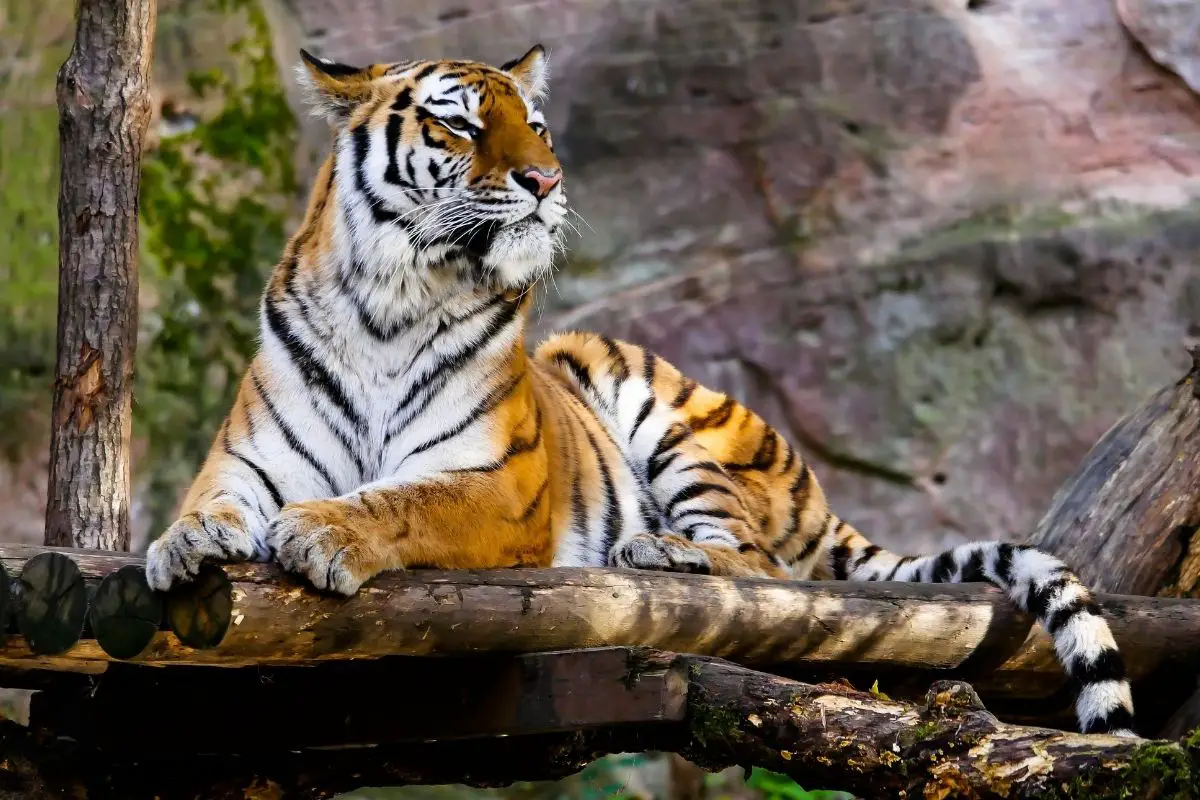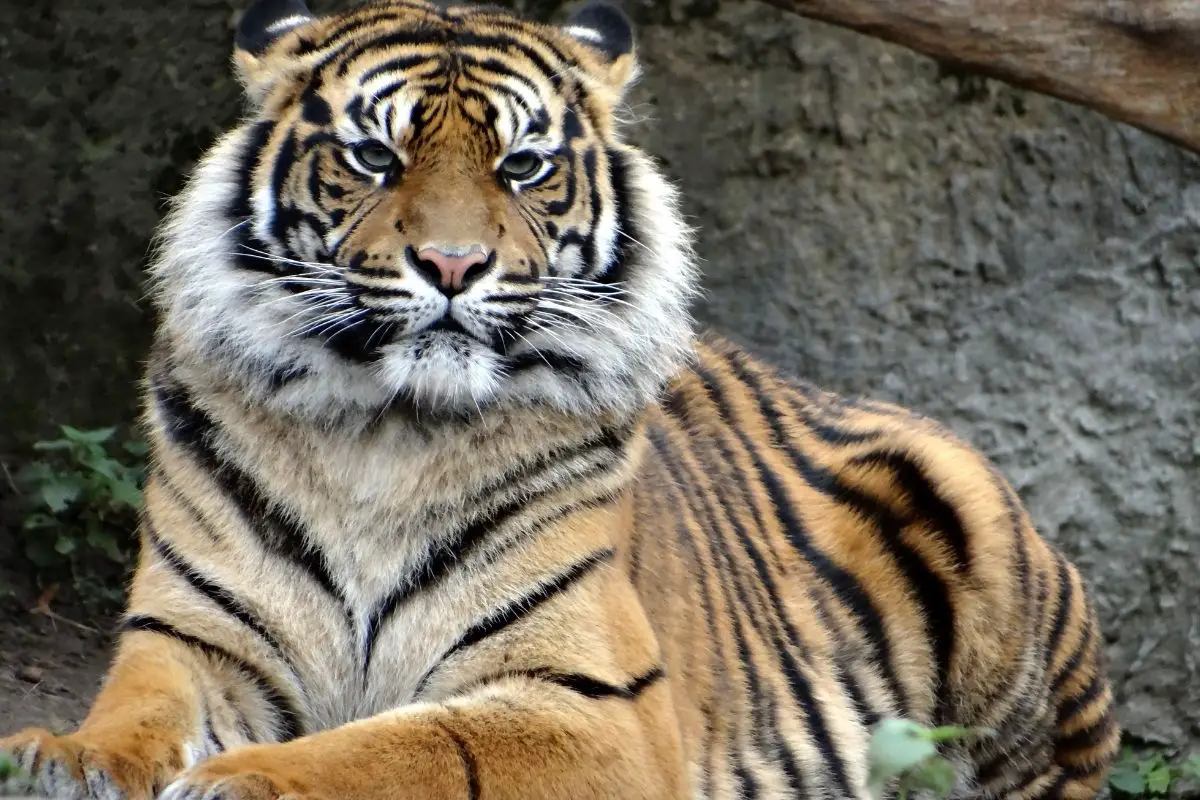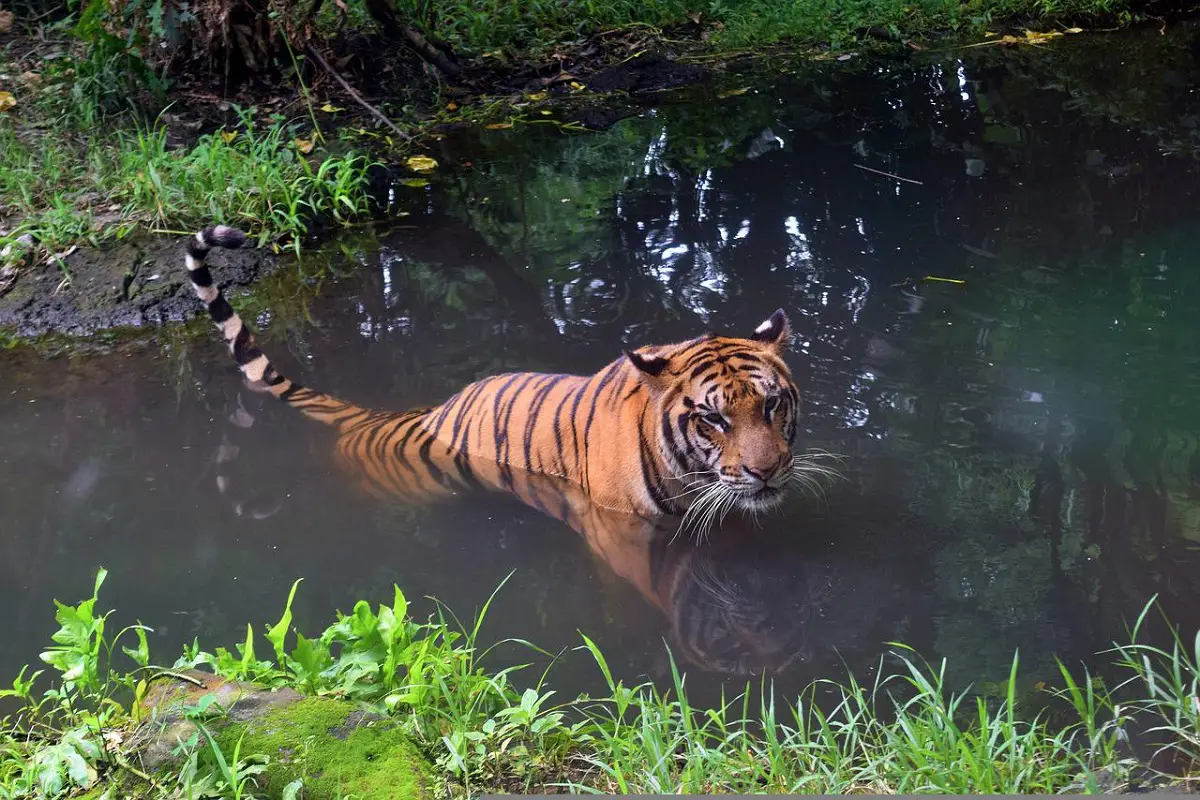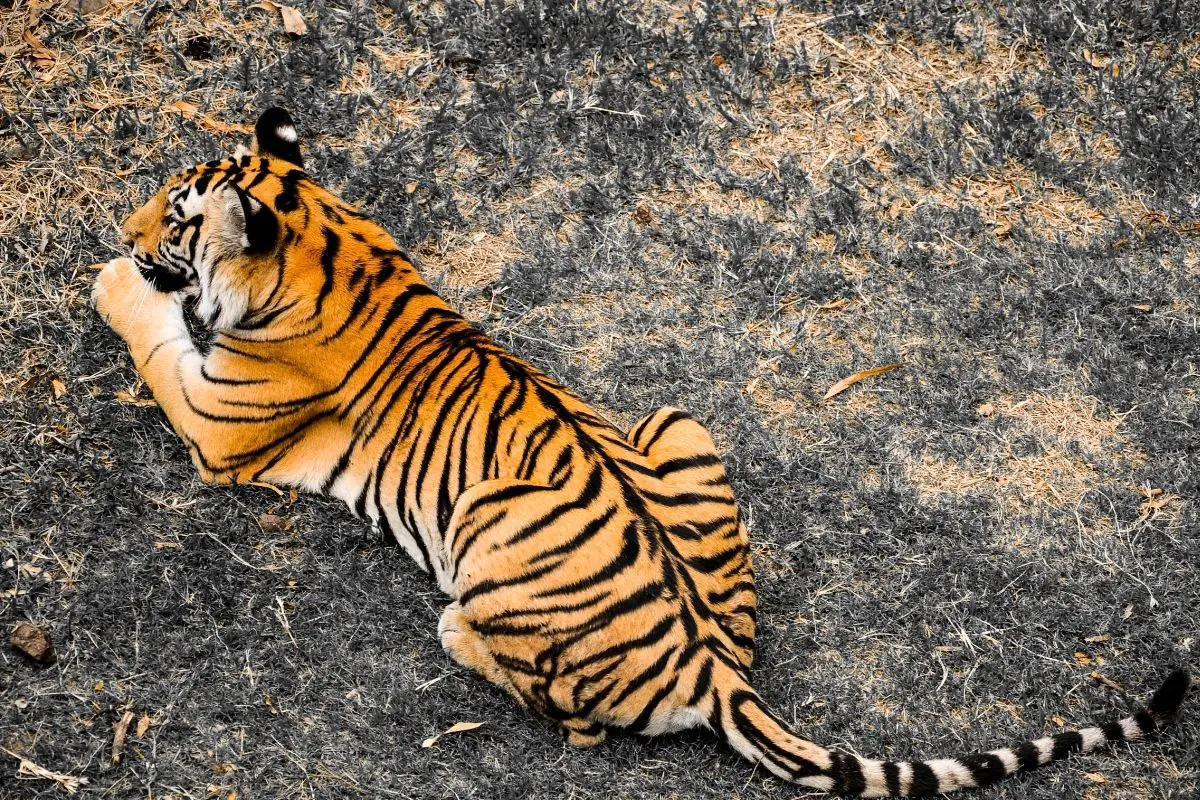Most of us know the tiger as the largest living cat species in the world. Easily recognizable for its vibrant orange fur and dark vertical stripes, the tiger is an apex predator, living in a range of environments.

A lot of you will also know that the tiger is an endangered species as a result of habitat destruction and poaching, but did you know, there are actually 9 different types of tigers found around the world?
If you didn’t, you’ve come to the right place.
Whether it’s tigers that live on the small Indonesian Island of Sumatra, Siberian Tigers living in freezing cold environments in China and Russia, or tigers that are sadly extinct, in this article we will look at them all.
We’ll teach you everything you need to know about all 9 types of tigers, looking at population size, characteristics, and unique features. We’ve even included some excellent images for you to enjoy.
If you want to learn more, or simply need your daily dose of beautiful animals, be sure to stick around!
Tiger Facts You Need To Know
Before we start looking at each tiger subspecies, it’s important to understand more about the tiger species in general.
Below, you will find some of the key facts you need to know about tigers. These facts will help you improve your tiger knowledge and help you understand each subspecies better.
- Tigers live in 13 different countries. These countries are Bangladesh, China, India, Russia, Nepal, Thailand, Vietnam, Cambodia, Bhutan, Laos, Myanmar, Indonesia, and Malaysia.
- Due to habitat destruction and poaching, the wild tiger population sits at approximately 4,500.
- 100 years ago, the tiger population was believed to be around 100,000. This shows just how endangered tigers are now.
- There are 9 different subspecies of tiger. Sadly, 3 of these subspecies are now extinct.
- Every single subspecies of tiger is endangered.
- The biggest threat to tigers is us! If it wasn’t for habitat destruction and poaching, they would be thriving.
- There are no tigers in Africa.
- Tigers and lions share a home in Gir Forest. This forest is found in India.
- A tiger’s stripes help it blend in with its surroundings so that it can remain unseen when hunting.
- No tiger is the same. They all vary in size and color depending on the region they live in.
Now you know more about tigers, let’s take a look at each subspecies. At the end of this article, you’ll be a tiger expert!
1. The Siberian Tiger
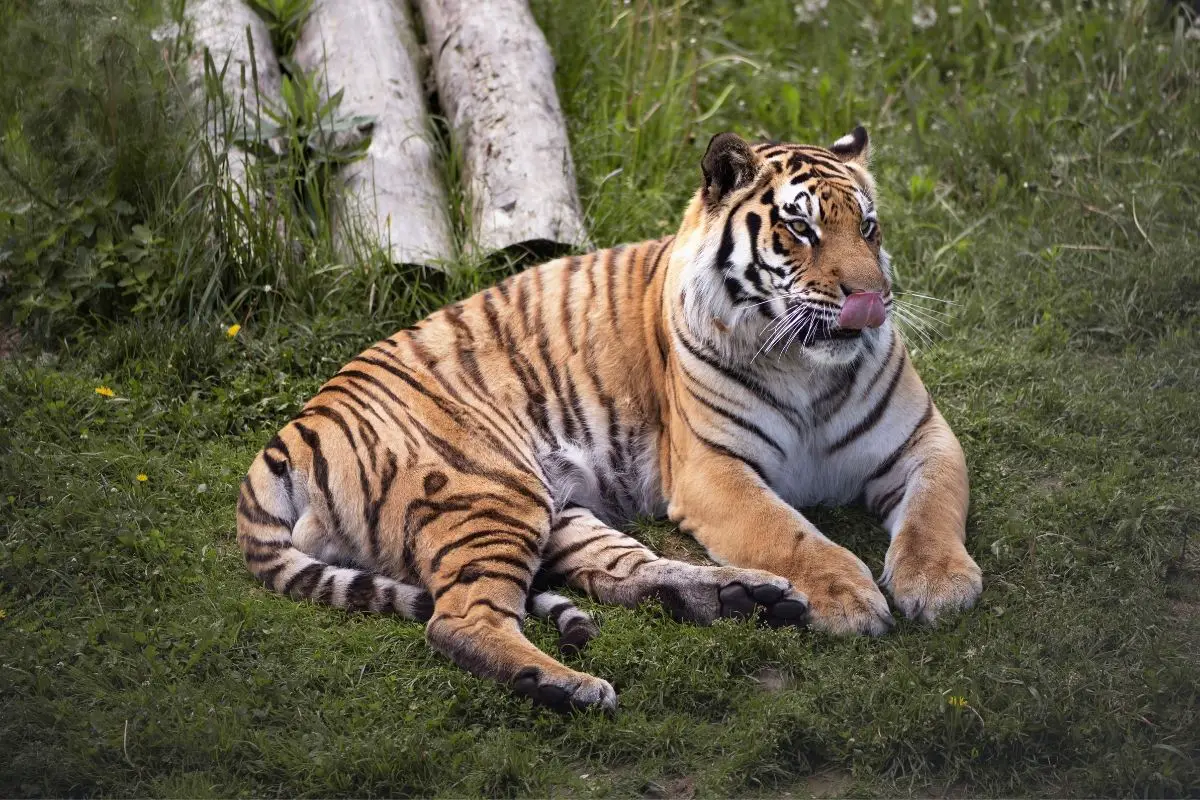
- Population: 500 – 550
- Threats: Deforestation, poaching, and bears
- Status: Endangered
Also known as the Korean tiger and Amur tiger, the Siberian tiger is considered to be the biggest tiger species. Having said that, it isn’t much bigger than the Bengal tiger.
Living throughout North Asia in countries such as Korea, China, and some parts of Russia, this subspecies of tiger can reach sizes of 5 to 7 feet long. Some males even grow to 10 feet long.
While they tend to weigh up to 475 lbs, the record weight for a Siberian tiger currently sits at 660 lbs (we’re glad it wasn’t us trying to get that tiger on the scales).
In terms of characteristics and features, the Siberian tiger is well known for its large skull and broad chest.
It also typically has much thicker fur as it has to survive freezing, snowy climates, and mountain passes. Their fur also tends to be paler in color.
While they usually hunt antelope and deer, Siberian tigers have been known to take down bears.
2. Bengal Tiger

- Population: 2,600 – 3,400
- Threats: Habitat destruction, poaching, and lack of food
- Status: Endangered
When you first picture a tiger in your head, the Bengal tiger is probably what comes to mind.
One of, if not the most well-recognized tigers, this subspecies has a vibrant orange coat of fur and white tufts around its ears. Of course, it also has black stripes that run down its body.
The Bengal tiger also has a stronger jaw than other subspecies of tiger, super-strong hind legs, and paws so powerful they can decapitate prey.
Unlike other breeds of tiger, the Bengal tiger can be born with a genetic mutation that turns its fur white and eyes blue.
Weirdly, this isn’t albinism, just a strange genetic occurrence that alters the tiger pigmentation.
For this to happen, both parents must carry the gene. As a result, only 1 in 10,000 Bengal tigers are born like this.
The Bengal tiger is also one of the oldest species of tiger, with its history dating back 12,000 to 16,500 years ago. Today, they can be found across the Indian subcontinent.
3. Malayan Tiger
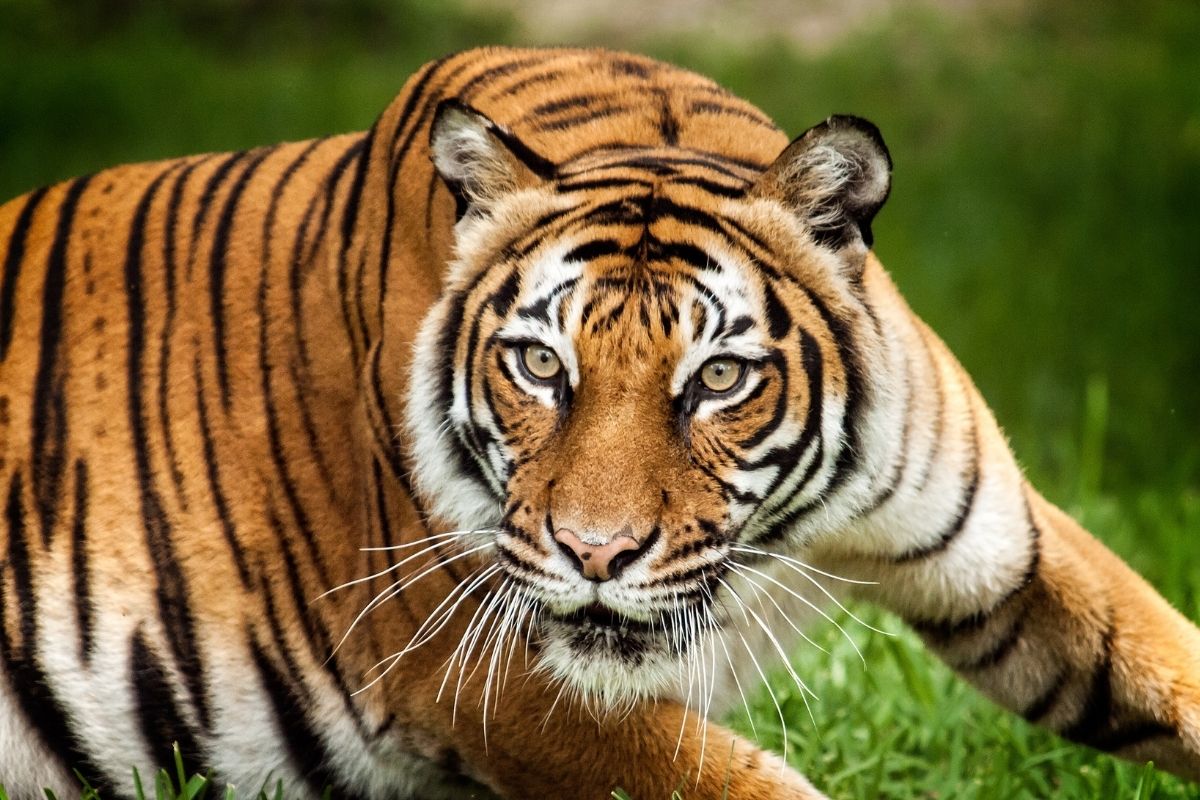
- Population: 150
- Threats: Deforestation and poaching
- Status: Critically endangered
Commonly referred to as the Southern Indochinese tiger, the Malayan tiger is sadly critically endangered, with its numbers still continuing to fall.
It is now believed that less than 150 Malayan tigers live in the wild. The main reasons for this are deforestation and poaching, as their bones are used in ancient medicine.
Generally smaller than other tiger species, male Malayan tigers can still grow to 9 feet long occasionally. However, they tend to grow to just 6 feet long.
This is also the case with female Malayan tigers who only grow to 8.5 feet long if they’re lucky. Usually, female Malayan tigers don’t grow much longer than 6 feet.
The Malayan tiger lives throughout Southeast Asia. While they are extremely hard to find, sightings have been reported in Malaysia, Burma, and Thailand.
Living in thick forests and jungles, they tend to eat deer and wild boar.
4. Indochinese Tiger
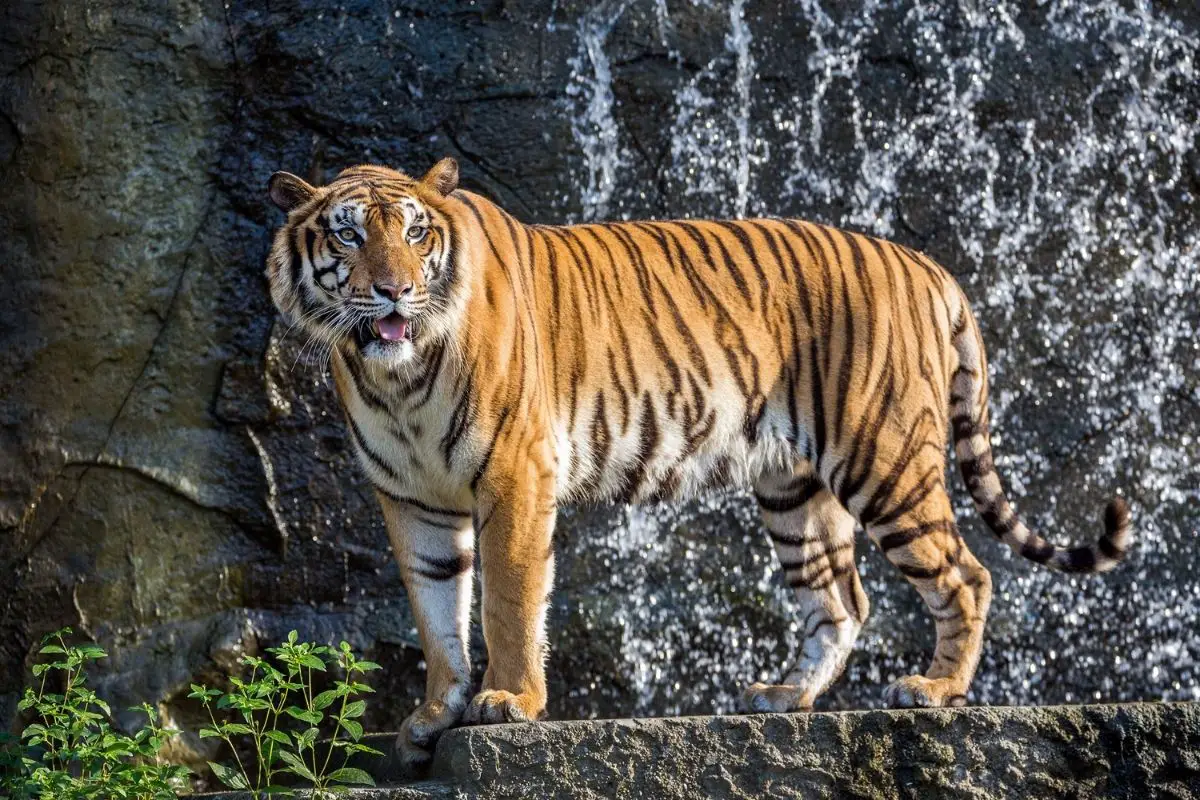
- Population: 300 – 400
- Threats: Loss of habitat, illegal trade, and poaching
- Status: Critically endangered
As this tiger species’ name suggests, the Indochinese tiger can be found all over the Indochina region of Asia. This includes China, Vietnam, Thailand, Burma, and Laos. The tiger’s biggest populations are found in Thailand, Vietnam, and Burma.
The Indochinese tiger is also referred to as the Corbett’s tiger or Corbetti after British hunter Jim Corbett.
When you consider Jim Corbett was called upon to kill man-eating cats like tigers, this seems pretty strange.
Just like the other types of tigers around the world, the Indochinese tiger is endangered as a result of illegal trade, poaching, and habitat destruction.
Unlike other species of tiger, though, the Indochinese population continues to fall dramatically.
Compared to other species of tiger, the Indochinese tiger is shorter, narrower, and only has single stripes. They also only reach weights of, at most, 430 lbs (males), and 290 lbs (females).
5. Sumatran Tiger
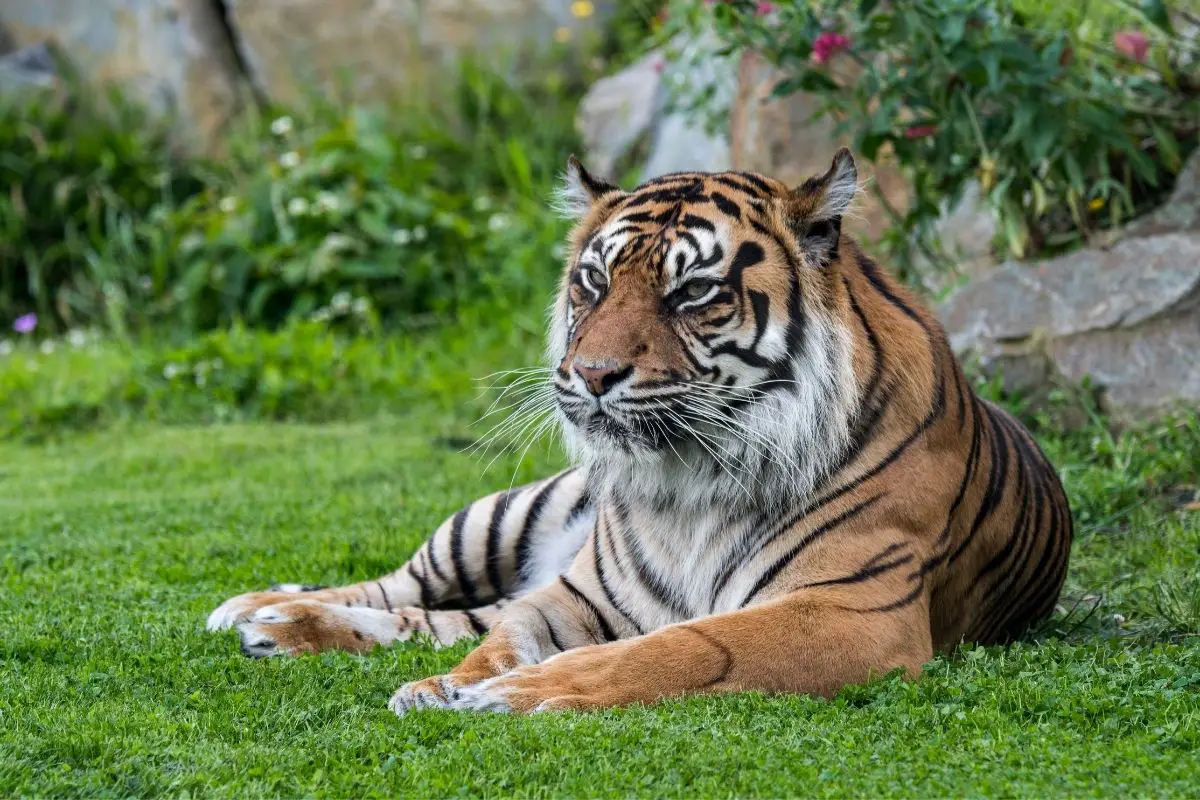
- Population: 400 – 600
- Threats: Deforestation and poaching
- Status: Critically endangered
Apart from zoos around the world, the Sumatran tiger can only be found on the Indonesian island of Sumatra in Asia.
It is believed that these tigers were separated from mainland tigers over 6,000 years ago when the sea levels rose.
As a result of this separation, they evolved slightly differently from their relatives, despite sharing very close genetic ties.
Due to their isolation on a small island, Sumatran tigers have evolved to become the smallest species of tiger in the world. For context, they can have half the heft of Siberian or Bengal tigers.
Their stripes are also very different when compared to other types of tigers.
The Sumatran tiger’s stripes are incredibly dark and well-defined, stretching over their whole body. Unlike other tigers, they also have stripes on their forelegs.
Another key thing to know about the Sumatran tiger is that it is the last surviving tiger in Indonesia. Unfortunately, the Javan and Bali tigers that lived alongside the Sumatran tiger are now extinct.
6. South China Tiger
- Population: Not known in the wild, potentially 0. There are approximately 100 in captivity.
- Threats: Habitat destruction
- Status: Near extinction
The South China Tiger is so rare that it is now believed to be functionally extinct in the wild.
Fortunately, there are still 100 South China Tigers left in captivity. In the wild, the South China Tiger hasn’t been seen for the last 20 years.
The main reason for their decline is the Chinese government’s destruction of their habitat in the 1970s.
The tiger was declared a pest and exterminated. This species of tiger quickly dropped from a population of 4,000 to as few as 40.
While this species of tiger might look quite similar to other breeds, aside from its small stature, there is an intriguing blue mutation that is believed can occur.
Though it has never been proven, witnesses have sworn they saw a tiger that was blue and white in color. This mutation cannot be ruled out because a white mutation can be seen in Bengal tigers.
Also known as the Chinese tiger or Amoy tiger, this amazing species was once found all over Central and Eastern China.
7. Javan Tiger
- Population: 0
- Status: Extinct
The Javan tiger was once part of the beautiful ‘tiger trio’ that, not too long ago, dominated Indonesia.
Unfortunately, the Javan tiger is now one of the 3 species of tiger that is extinct. This species of tiger were officially declared extinct in the 1970s. Since then, not much has been known about the species.
However, there may be hope for the species. Since 2009, a number of reports have been made by locals claiming to have seen a Javan tiger with two cubs. Paw prints were then found after a volcanic eruption in 2010.
Amazingly, then in 2017, a wildlife ranger managed to take a photograph of a tiger-like animal eating a bull. While these sightings might not be the Javan tiger, we can always hold up hope.
In terms of appearance, the Javan tiger wasn’t too different from the Sumatran tiger.
Like the Sumatran tiger, this species was small in size. In fact, this tiger would be extremely lucky to grow to 8 feet long and weigh more than 250 lbs.
8. Bali Tiger
- Population: 0
- Status: Extinct
The next species of tiger is the Bali tiger. Another type of extinct tiger due to habitat destruction and poaching, this species was once the smallest type of tiger to roam the earth.
Living on a variety of Indonesian islands with the Javan tiger and Sumatran tiger, the Bali tiger hasn’t been officially sighted since the 1930s. It has been considered extinct since the 1950s.
Sadly, the only remnants of this beautiful species today are bones and skulls that have been kept in museums.
Even compared to the Javan tiger, the Bali tiger was small. The largest males and females would only ever reach lengths of 7.5 feet and 7 feet.
Like the Sumatran tiger and Javan tiger, the Bali tiger had very dark, defined stripes and deep, dark orange fur. As a result of its extinction, not much else is known about this wonderful species of tiger.
9. Caspian Tiger
- Population: 0
- Status: Extinct
The final type of tiger we need to discuss is the Caspian Tiger. Also commonly referred to as the Turan tiger, the Caspian tiger is also extinct.
A species of tiger that would once roam across the Middle East and Central Asia, including countries such as Iran, Turkey, Afghanistan, and China, the Caspian tiger preferred to stay around the Caspian Sea. Hence, the name Caspian tiger.
If the species were still alive today, it would be considered the largest tiger species in the world. In fact, the largest specimen ever recorded was almost 12 feet long and weighed an incredible 530 lbs.
The Caspian tiger would usually have quite muted colors in comparison to other species of tiger.
Their fur was so pale that the tiger was originally called the gray tiger when it was first spotted in the 19th century. However, their fur was later proved to have a rusty orange color and some shades of brown.
While it can’t be guaranteed that this breed is definitely extinct, conservationists aren’t holding out too much hope. This is another type of tiger that suffered at the hands of humans.
Final Thoughts
Tigers are one of the most interesting, beautiful, precious, and fierce predators on earth. In this article, we have shown you the 9 different types of tigers that live or have lived for centuries.
Hopefully, now you’ve read through the article, you have a much clearer idea of what unique features each type of tiger has, what their current status is, what threats they face, and their current populations.
While conservation efforts are continuously developing to protect the tigers the world still has, as a result of deforestation, poaching, and habit loss, 3 species of tigers have become extinct.
Thankfully, those efforts are now turning the tide in the big cat’s favor, ensuring a much brighter future for the world’s largest cat.
- Sink Your Teeth Into This: Analyzing the Powerful Lion Bite Force - September 8, 2023
- Siberian Tigers: Everything You Need To Know - September 4, 2023
- Do Lions Eat Humans? Understanding Lion Aggression and Risks - September 4, 2023


